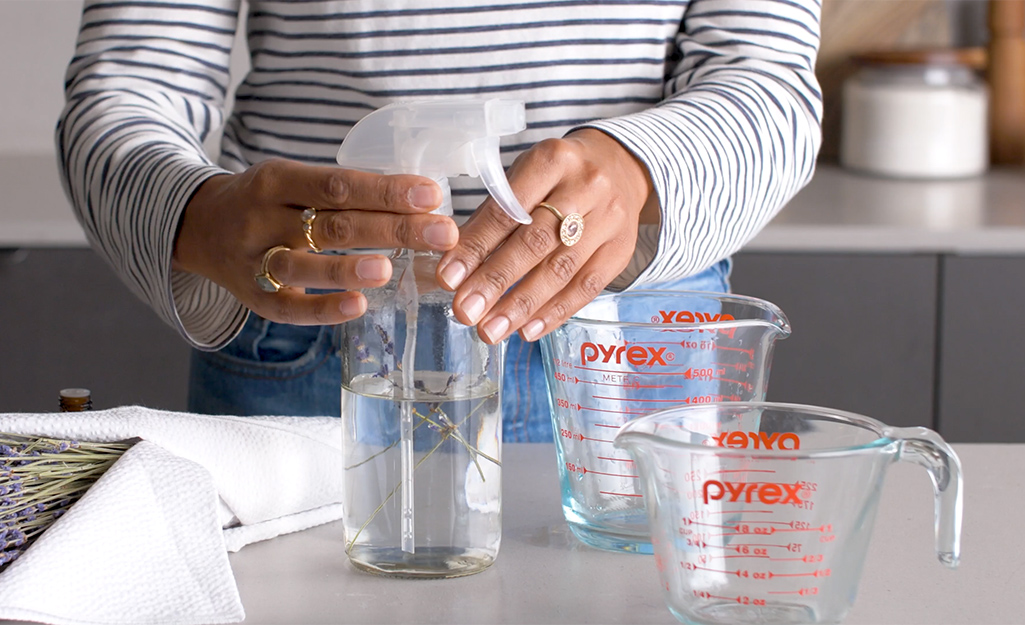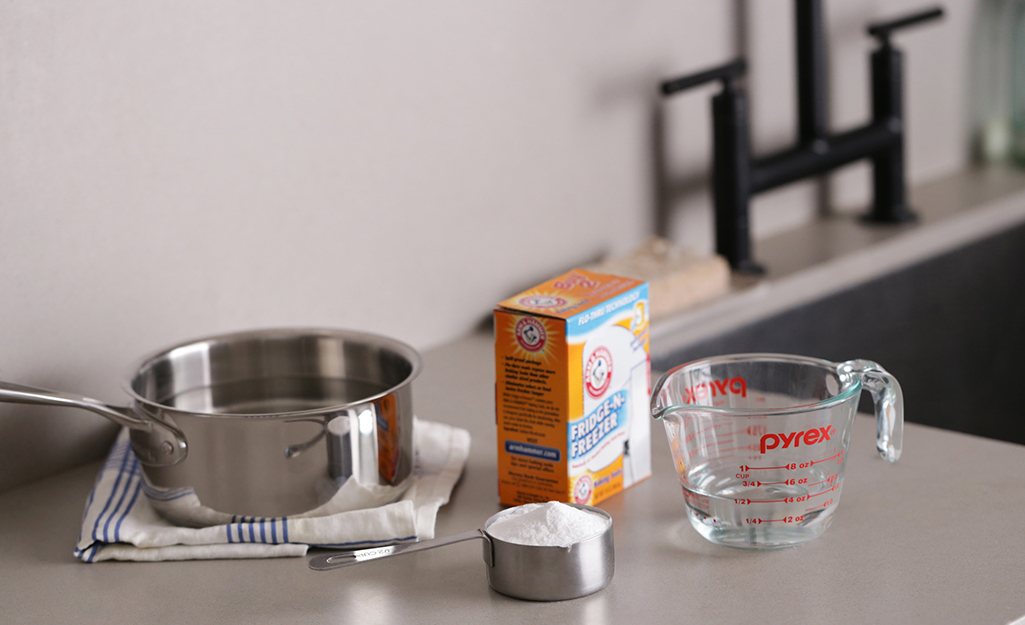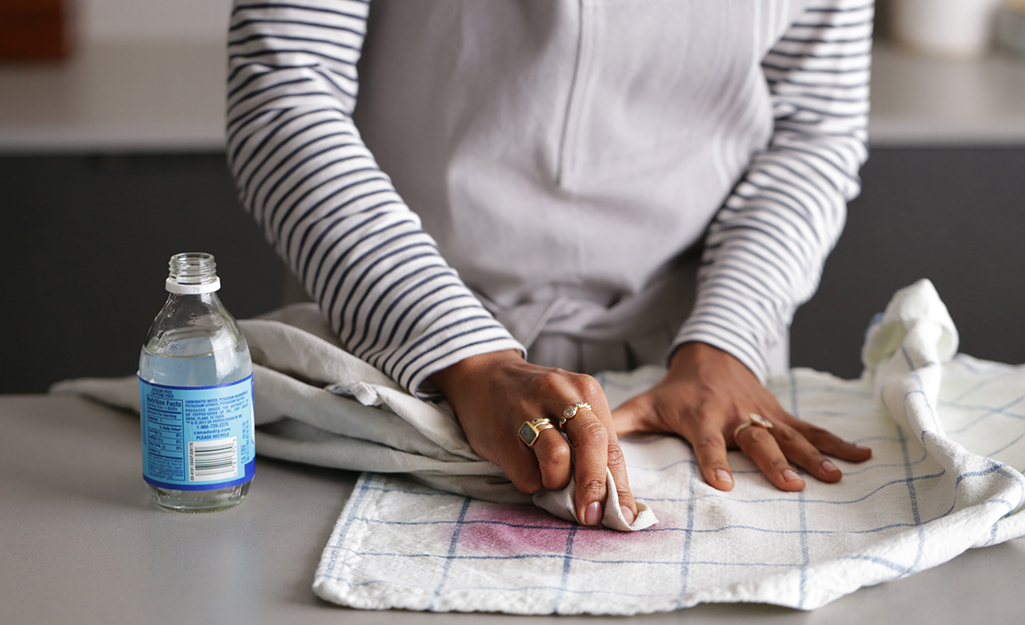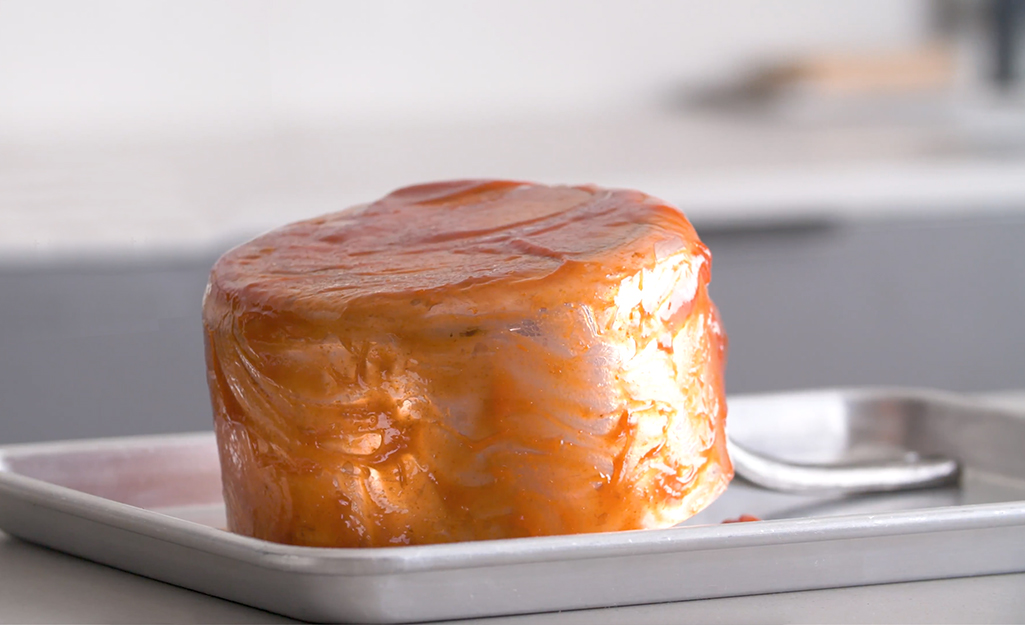Project Guide
How to Clean Your Home Using Pantry Staples
We are all in pursuit of the cleanest home possible. Shining kitchen surfaces, spotless cookware, dust-free furniture – these are all features of an ideal home, and they all take work. Given how busy most people’s schedules are these days, it is sometimes hard to find time or the appropriate cleaners to keep a spotless home day in and day out.
This guide will walk you through unexpected tricks that await you inside your pantry. Using some home staples that most everyone keeps on hand, you can tackle a slew of cleaning projects, knowing you are not only making efficient use of your time and dollars, but are also keeping things pretty all-natural.
1. Vinegar

Its main chemical component is acetic acid, which means vinegar can take down a lot of grime. Vinegar’s acid count can cut through dirt and grease, as well as remove hard water deposits. It actually acts to kill bacteria and viruses, like E. coli and salmonella, as well as other germs that can find their way onto countertops, dishes and bathroom surfaces. Just about any vinegar (white distilled vinegar, apple cider vinegar, malt vinegar, any specialties) can be used to clean because they all possess the masterful trait of high acidity. That said, we recommend distilled or white vinegar. This variety, which is often made of grains such as corn, is clear, so you won’t risk stains. It is widely available and is less expensive than some of the high-flavor or niche ingredient sorts that use wine bases or are raw and unpasteurized (apple cider vinegar). You can buy white vinegar by the gallon and store it in your pantry for ages. In fact, studies suggest it has an almost indefinite shelf life. Just mix equal parts vinegar and water and you can use the solution to wipe down nearly any surface. Steer clear of marble and other porous stone surfaces. The same goes for wood. And if you aim to use this hack regularly, you can fill a spray bottle with the solution to spritz with ease.
The solution is also your best friend when you are dealing with a dirty or clogged showerhead. Simply wipe away as much debris form the showerhead as you are able and then submerge in the one-to-one vinegar and water solution. You will need to leave the head submerged for 15 to 20 minutes. This can be achieved either by holding a cup or jar below the showerhead, but your best bet is either to remove the head and place it into a standing mixture or pour your mixture into a bag and tie the bag around the shower faucet.
Other great vinegar uses:
● It cuts through tacky substances like glue and sticker adhesive, so it will help you remove price tags on glass and plastic.
● For crumbs stuck in hard-to-reach places, wrap a wooden skewer with a vinegar-soaked cloth and slowly drag through the space to clear it out.
● Vinegar is also a natural fabric softener and can be used to deodorize fabric.
2. Baking Soda

Tip: Baking soda will become less reactive over time, so switch out your box every two years.
Baking soda is vinegar’s partner in crime. It can be used almost as widely and partners up well with the acidic helper. Baking soda, or sodium bicarbonate, is chemically akin to salt. This means it is a neutral compound with a slightly high pH level. In short, it will absorb anything that is acidic, rather than cutting through or masking. Many odors are in fact, acidic, which is why baking soda is so great at neutralizing them. This acid-base reaction is also why baking soda and vinegar partner up so well.
Remember your science fair volcano? That combustive chemical reaction can be used to tackle your toughest jobs. A great use for this is cleaning drains – pouring baking soda and vinegar down a kitchen or bathroom drain effectively cuts through clogs. Spread a dusting of baking soda across your oven, leave it sitting for a few hours (or overnight, if you can) and then splash vinegar on top and you’ll be able to remove the grease buildup.
For more oven cleaning advice, you can take a look at our guide. The duo can also help remove stains from fabrics and act as a gentle surface cleaner.
3. Club Soda

If you act quickly, club soda will work to remove stains from fabrics and carpets. The efficacy of club soda as a cleaning agent is debated because the stain must not be set. As long as this is the case, club soda will help you out. The crux of this cleaning solution is club soda’s combination of carbonation and ever-magnetic salt.
Pour a bit of the liquid onto the stain and dab, working to a gentle rubbing motion. This method of stain removal is best achieved on non-porous fabrics because they are slower to absorb and set a stain. You can also use club soda to remove stains from porous marble sinks and similar surfaces. Or try this trick when it comes time to clean the interior of your refrigerator: For a quick cleaning, swipe a cloth soaked in club soda and salt across all surfaces, being mindful to give corners extra attention.
4. Other Grime Removers

These three pantry staples that do more than flavor meals and act as side dishes:
- Salt: Salt can be used to scrub and absorb stains on wooden cutting boards. If you drop an egg, or spill a hot liquid or a dish boils over in the oven, covering the spill with salt while it is still wet will make the mess easier to clear. Making a paste of salt and vegetable oil, you can rub away the rings left by glasses that didn’t make it onto your wooden table’s coasters. Given how abrasive it is, salt is also very helpful in scrubbing away stubborn bits of food from your cast iron pan while avoiding removing any seasoning.
- Lemon: Lemon’s mild acidity means it, too, will help you cut through grime. And what’s more, it will leave you with a pleasant, clean-as-can-be scent after you’re done. Mixing a bit of lemon juice with water will help you remove oil from your stove and appliances. It can be used to clean brass, and you can take dishwashing to the next level by adding a little lemon juice to a sink filled with hot, soapy water. When paired with kosher salt and a bit of mineral oil, lemon can remove stains from your most-used, wooden cutting board. Once you’ve used your lemon, put it in the garbage disposal to rid your kitchen of any lingering odors.
- Rice: A useful cleaning agent because it is both absorptive and abrasive. Take on seemingly impossible to clean vases and thin-necked bottles by partially filling with warm water and a handful of rice then shake vigorously with your hand or a napkin atop. Adding a handful of uncooked rice to your coffee or spice grinder, you can whir away oily residue. A word of caution, though: If you have a burr grinder, skip this method, and in all cases, uncooked instant rice will be your gentler option.
5. Unexpected Helpers

Ketchup and black tea to clean? Yes. Take a look at how these everyday items can help around the house.
- Olive Oil: Olive oil’s sumptuous quality makes it a world-class polishing tool. Just as it adds moisture to baked goods, vegetables and everything in between, it can moisturize your wood products. Mixed with a bit of lemon juice (we recommend two parts olive oil, one-part fresh lemon juice), olive oil can act as a polish for any and all of your wooden furniture. This solution can be stored in the refrigerator for a few weeks but should be set out to return to room temperature before use.
- Tea: Make yourself a watered-down pot of black tea and you have an excellent mirror cleaner. Black tea is acidic and tannic, qualities that make it an ideal cleaner to dissolve dirt and grease. This brew can also be used to polish wood (including furniture, cabinets and hardwood floors). Its tannins add a nice warm stain to any wood that’s displaying inconsistent markings from wear. Tea can even remove rust from aging metals.
- Ketchup: No, you won’t stain your kitchenware using ketchup to clean. That is, as long as you reserve it for your set of copper cookware or silver utensils. Using a cloth and some of the beloved condiment, you can clean tarnished copper, be it a vintage piece, a well-loved recent purchase or a copper-bottomed saucepan. Vintage silver cutlery seen better days? No problem. The acetic acid in ketchup attacks the copper oxide, that brownish black layer of tarnish created during cooking, so with a dab on a cloth, you are moments from a restored item. Rub the surface to bring back the original shine and follow with a rinse of water.
